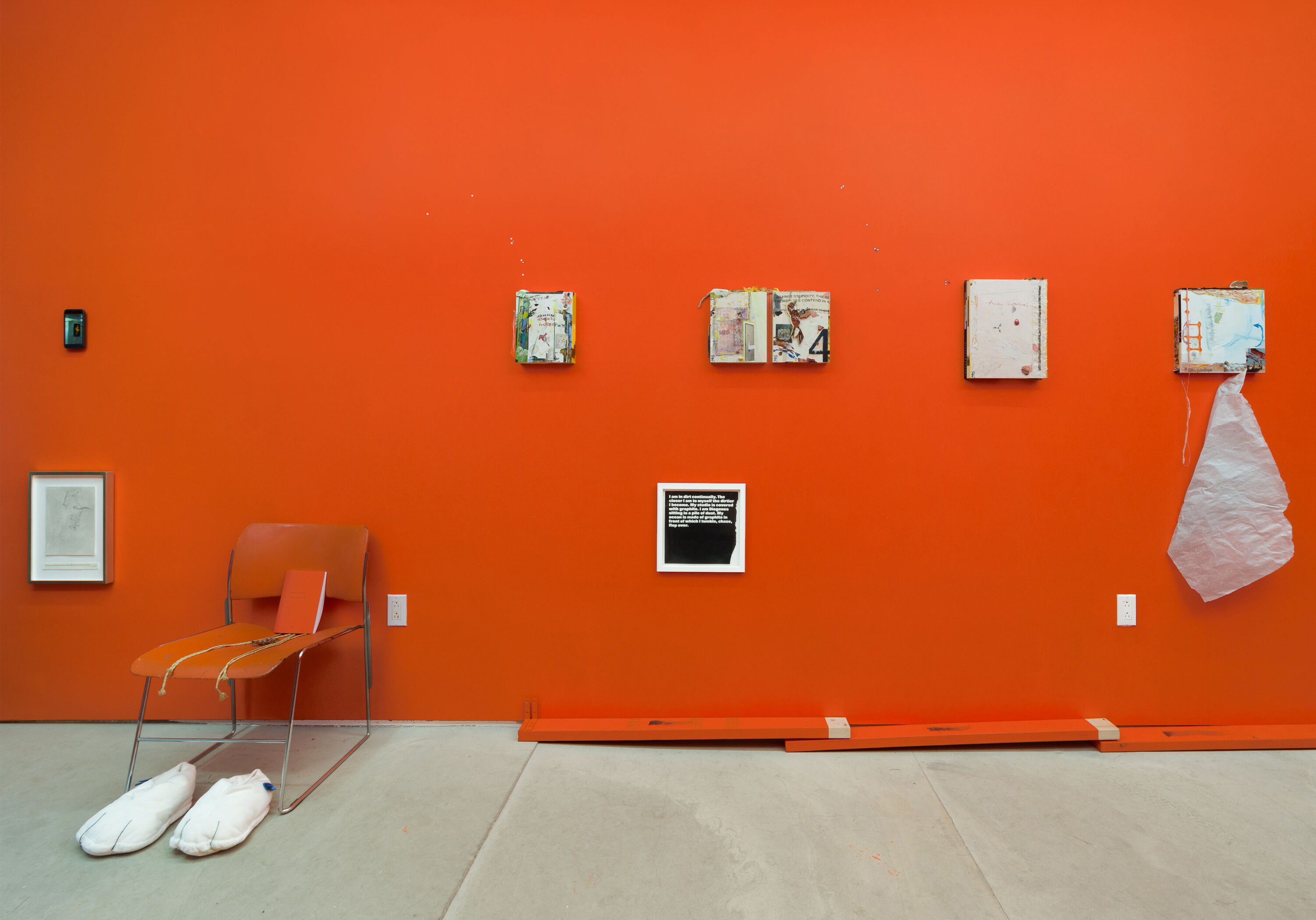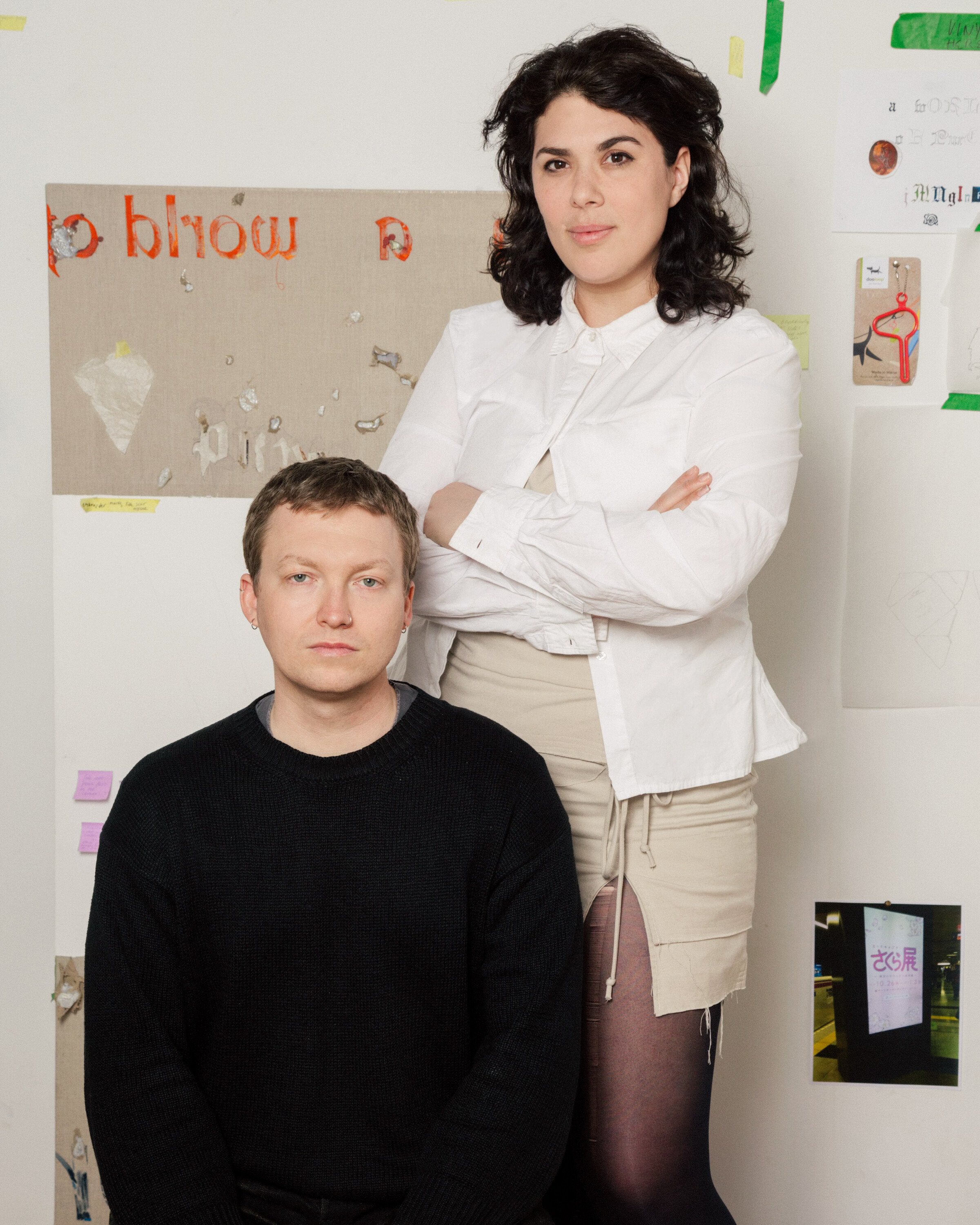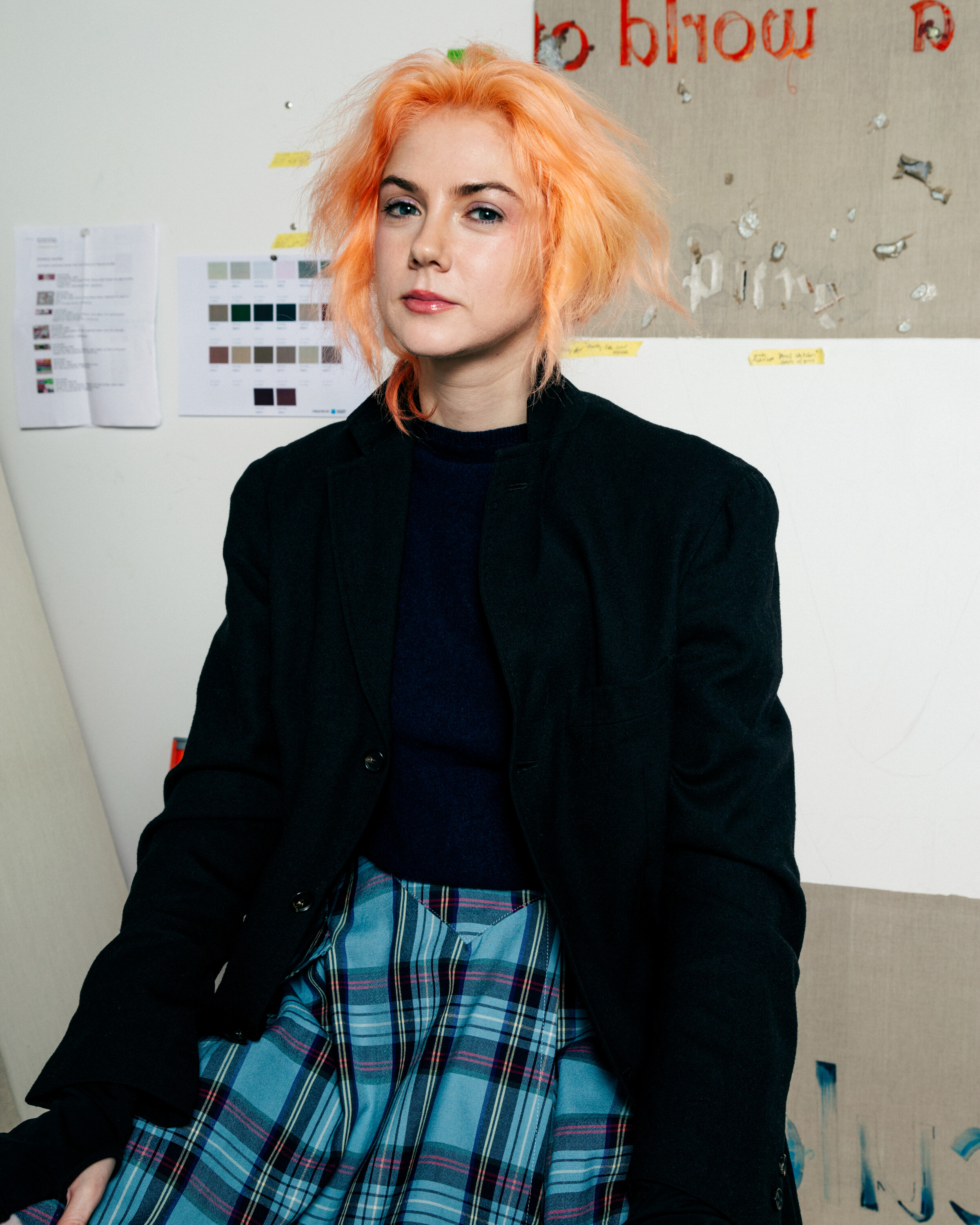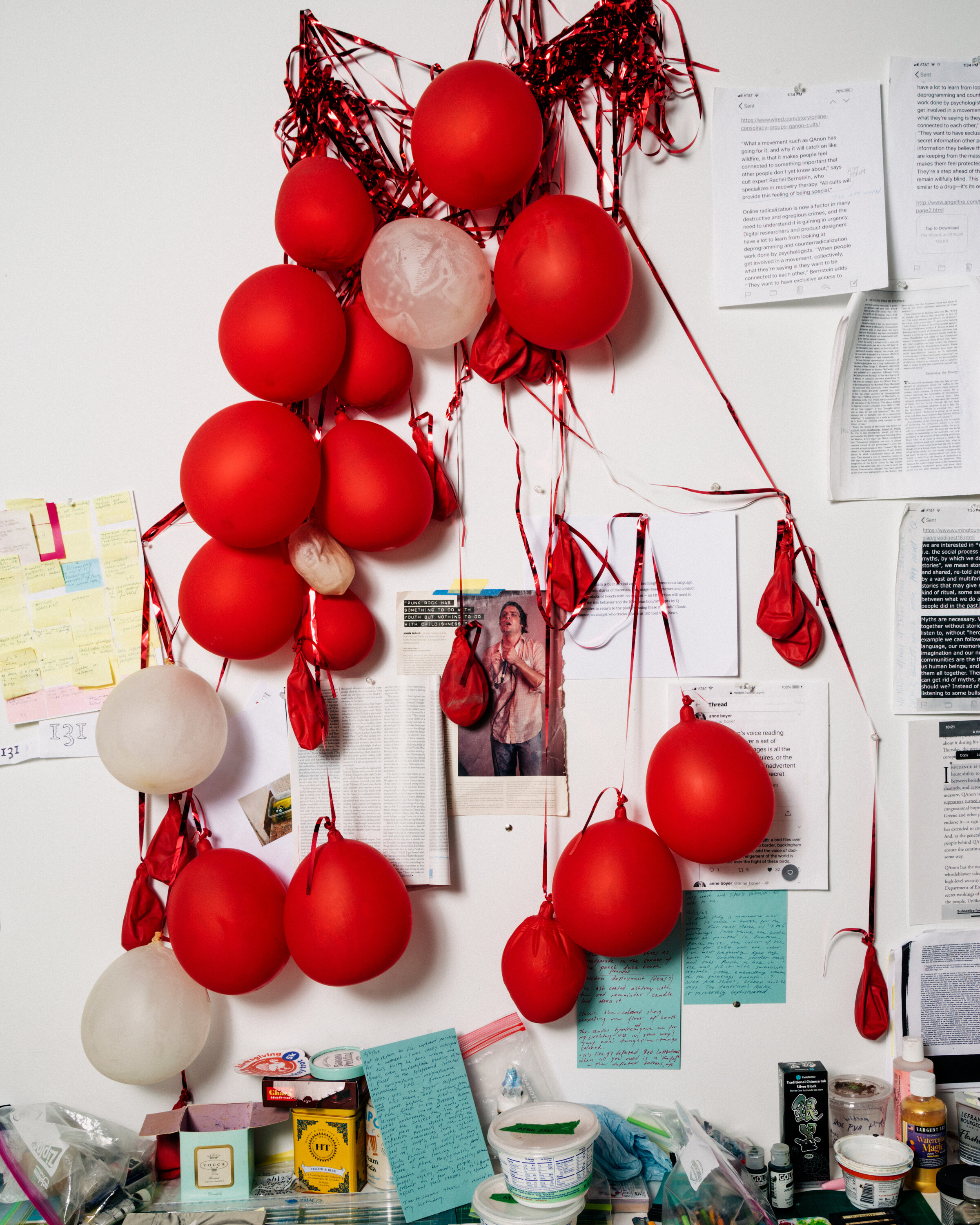Brooke Nicholas and Ian Glover on

Founded by The Armory Show in 2019, the Gramercy International Prize awards a young, bold New York gallery a complimentary booth at the fair. The winner embodies the spirit of the fair's founders in supporting and celebrating the avant garde.
Each year, the Gramercy Prize Winner is selected, in part, for their embodiment of the spirit of the fair’s founders—Colin de Land, Pat Hearn, Matthew Marks, and Paul Morris—in support and celebration of the avant-garde. How do you see yourself continuing this legacy?
Ian Glover (IG): Blade Study’s program is entirely at the mercy of the artists we show. Our focus is to support solo shows that help emergent artists strike out in a new direction, or more established artists realize work that may not be supported elsewhere. In that sense, we lead with the vision of the artists we work with.
Brooke Nicholas (BN): We joke that the artists are always smarter than us. We steer initial conversations, have general meetings about what a show might become, and share advice about how the space works. Ian and I step out of the way as early as possible so the artists can make what they need to make rather than create what they think we, or the public, want to see.
IG: I find our best projects come out of this process.
BN: Sophia Giovannitti’s performance series, Does it have a sincere relationship to God? Is a good example. She created an exhibition that acted as the bones for an accompanying lecture, hosted on Thursday and Friday nights for the run of the show. It was an ambitious project that addressed the unreliable state of language post “Me Too.” Once the project was in motion, I understood that her vision for the exhibition was already present in our very first conversations. My meddling would not have made a better show.
IG: Staying limber with our artists yields unexpected results. Our projects with Paige K. B. also exemplify this. For Armory, we asked her to address the fair model in her presentation. She took that direction and created a conceptual installation for our booth the artist has titled, Very Beautiful Images With Quite A Bit Of Concerning Text Laid Over The Artwork.
BN: K. B. compares the experience of walking through an art fair with the feed model in social media applications like Instagram or its predecessor, Tumblr. It also considers the role of art fairs and how they generate and distribute their own unique forms of imagery and meaning.
IG: We are generally interested in how digital technology and networked culture are the substrate and context of many people's lives. This is one way our programming echoes the founders of the Armory. We are not afraid to exhibit new media,or incorporate literary, or non traditional, influences.
BN: The work we show often intersects with that observation and engages with the sociopolitical and spiritual intervention of computation and the internet. People and their tools are an interesting area of consideration. As a program, we focus on artists engaging with life right now. The curatorial aim of the project is an attempt to create a record of life as it is now in all its facets.
IG: We don’t explicitly chase the idea of the avant-garde, but we are interested in addressing reality as it is collectively formed.
BN: I think we both like the part where humanity carries around an ancient core that gets dressed up continuously with new things.
IG: Old software, new hardware.
BN: Maybe what Blade Study does is find artists who can identify the new hardware.
IG: Or, it’s the people most aware of their ancient core.
Blade Study was founded in 2020, at an unorthodox time in the world, and also an uncertain time for many artists and the art market. In what ways did the conditions of that moment inform or influence your gallery’s mission and your relationships with the artists you represent?
BN: Ian and I started intentionally working together and with artists in 2020, but more projects were initiated than successfully completed. Blade Study really began in 2022, when we found the storefront.
IG: It was a lucky fluke that we found our spot in the neighborhood. Brooke was introduced to the family who owns the building through an artist. We sincerely love our neighbors and have enjoyed getting to know so many other art dealers, curators, artists, writers, and gallerists.
BN: 2020 influenced us in the sense that Ian and I “sheltered in place” together during that phase of the pandemic. We had time to think through what a collaboration between us would look like. We have a longstanding friendship that started when we were teenagers, and have always informally worked together and supported each other's projects. I was finishing graduate school and living upstate right as the lockdown started. When Ian came up from the city, he, I think, out of amusement, started translating my exhibitions into websites.
IG: I am a software engineer and a designer who works with code as a medium. Suddenly, everything had to be online. Brooke had a lot of interesting problems in the form of exhibitions and works which were originally planned to be presented in space that I was able to help evaluate and translate to digital forms.
BN: Ian is also a trained illustrator. He attended RISD and is a gifted artist himself. He really understood what elements of artistic production could be reinterpreted online and I helped him express those limitations to the artists I was working with.
IG: Like many people, we grew tired of the disconnection created by life lived online. After two years of remotely working with artists, we both felt called to have projects in person. Blade Study is very community-driven. While many of our artists and collaborators work with digital techniques and forms, we all share an interest in what a physical space brings to an exhibition. Every artist we work with is invited to incorporate events or other programming that support their exhibition.
The gallery is located in one of New York’s most vibrant gallery neighborhoods, the Lower East Side. How has your location in this neighborhood, and in this city, inspired the gallery’s program? What is it about the Lower East Side that makes its art scene so unique?
IG: I have whatever particular brain damage that is necessary to live in New York. I can’t be anywhere else. It’s important to me to be able to run into the people you like in public. When Brooke and I started considering spaces for the project, I was adamant that we had to be in Manhattan.
BN: I like New York because it’s a patchwork of neighbors. The Lower East Side exemplifies that spirit. When I was introduced to our landlord, who bought the building in the ‘70s and is committed to keeping it in her family, she also introduced me to our immediate neighbor, gallerist and jeweler Will Shott. He had just moved into the building and was renovating his gallery. His mom was fixing the planters out front while he was painting inside. He was an instant friend. I knew we could share tools and commiserate on the difficulties of starting a business from scratch. It’s partially because of Will that we chose our location, 17 Pike Street.
IG: Our block is very connected. I don’t know what our gallery would be like without the advice and input of neighbors like Casey Gleghorn of No Gallery or David Fierman and Tony Jackson.

We lead with the vision of the artists we work with.
At the fair, Blade Study will present a solo booth by Paige K.B. that will playfully explore the blurred lines between source material and their reproductions in an increasingly digitized world. How do the themes and methodologies of Paige K.B.’s art practice reflect the ethos of Blade Study’s mission?
IG: We are interested in artists who interrogate the role of the artist and art itself in contemporary conditions. Paige’s interest in stretching and examining the strain between the original, the ‘authentic’, and reproductions and how they are valued and communicate information is a vital one made more pressing by the de-contextualizing forces of the internet. Her work is insightful about connecting the past and the future of art production and how conceptual art touches other mediums like writing, photography, sculpture, and painting.
BN: Paige also shares an interest in our program of examining how art exists within a world of larger forces, economic and otherwise. At her previous exhibition with the gallery, Paige installed There’s More (RIP), 2023 a series of painted acrylic eagles, the appropriated logo of First Republic Bank, on our windows. They were previously painted on windows at MoMA PS1 in 2021. Since their installation, the bank has collapsed and gone into receivership, raising questions about whether our collective work is upstream or downstream of these societal changes.
IG: Painter Em Aull observed that the thing all Blade Study artists have in common is an insatiable appetite for media consumption. There is no high or low culture. Everything, from Spongebob to Carl Jung, is to be taken as a serious example of human expression. K. B. is in good company with the other artists we work with, who, with different results, reference literature, philosophy, theory, cinema, social media, politics, art history, and pop culture in the production of their work. I admire how she creates knots in the threads she weaves between the movements and theories that inform her work.
Paige K.B. had a solo exhibition at Blade Study in summer 2023, Of Course, You Realize, This Means War. Could you talk about what you see as the throughline between that exhibition and Paige’s upcoming presentation at The Armory Show? How do the presentations differ?
BN: Both projects illustrate K. B.’s ability to create a productive container for her research and ideas through installation. Not unlike a Dutch still life, everything she includes means something.
IG: In her first project with the gallery, Of Course, You Realize, This Means War, K. B. identified how the mode of conspiratorial and paranoid thinking relates to art history, writing, and meme production. These forms all require the ability to make connections between disparate occurrences, philosophies, humor, and histories. Her installation for the Armory focuses specifically on the memetic mode.
BN: Though both exhibitions explore memetic form, the installation Very Beautiful Images With Quite A Bit Of Concerning Text Laid Over The Artwork at the Armory proposes that the initial consumption of an art booth is similar to the experience of witnessing a meme online. She is pre staging the show itself as a meme.
IG: A core tenet of the artist’s practice is reworking and iteration. All of her exhibitions are links in a chain, or maybe more accurately nodes in a graph. Our focus when presenting K. B.’s work is to show her ability as an installation artist who uses the whole space and every last drop of what's available to her to convey a concept.
K.B.’s work often explores themes of authorship and text as a sculptural material. In our increasingly digital world, text has become so ubiquitous that it can be incredibly easy to overlook how what we read online informs and affects our everyday behavior. Why do you think it’s so important to critically reflect on our relationship to online text and the power relations embedded in this way of receiving information?
BN: I think K. B. ‘s work is especially relevant because she is making an attempt to insist that all media transmutes information and influences mass opinion.
IG: In Paige’s first exhibition text, she cites an essay by Corita Kent and says that her works exist “somewhere in between singing and silent reading, somewhere in between Gutenberg and the image industries.” Technologies like Gutenberg’s printing press or early text-based messaging boards are inevitably adapted for the dissemination of images, leading to our fractured contemporary visual culture.
BN: Understanding how text is produced and distributed is vital for understanding how it is received and understood.
IG: It’s also important to reflect not just on consumption but on production. A variety of forces act on text, information, and distribution now, specifically semi-autonomous ones like artificially intelligent agents. Large language models trained on vast corpuses of text break down traditional ideas of authenticity and authorship. K. B.’s work is necessarily unsettling what it's like to absorb and access information now.
What excites you about exhibiting at The Armory Show 2024?
BN: This is an exciting opportunity to sharpen our skills and learn more about art dealing and supporting the careers of the artists we work with. This is our second opportunity, after winning the Curatorial Spotlight with Emma Safir's Pearls for Young Ladies at NADA NY, to place work off-site and at an art fair. We are really excited to be included and to show K. B.’s ambitious project.
IG: We are excited to be in such esteemed company. We are so grateful to have been awarded the Gramercy prize.
Blade Study is a programming-driven gallery space established in 2020, located on the Lower East Side, Manhattan. Founded with the intention of creating value around work that might otherwise be deemed too experimental or niche, Blade Study creates an environment where emergent artists can build foundations for forward-thinking exhibitions that speak to our times.


